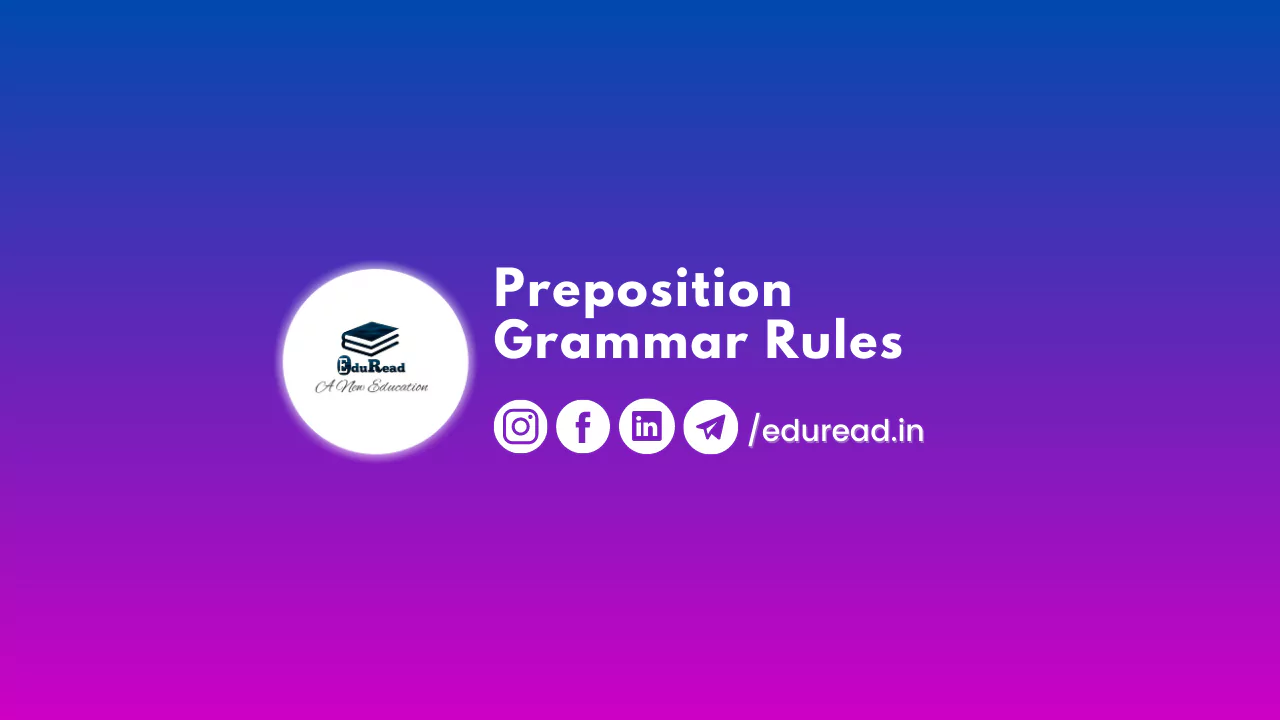As a language model, one of the most common grammatical structures that I encounter is the preposition. A preposition is a word that usually precedes a noun or pronoun and indicates the relation between the noun or pronoun and other words in the sentence. Prepositions are crucial in sentence structure and convey important information to the reader or listener. Understanding preposition grammar rules is essential for anyone who wants to write or speak effectively in English. In this blog, we will explore the most important preposition grammar rules.
The first rule is that prepositions are always followed by an object
This object can be a noun, a pronoun, a gerund, or a clause. For example, in the sentence “I am going to the store,” the preposition “to” is followed by the noun “store.” In the sentence “She is interested in reading,” the preposition “in” is followed by the gerund “reading.” In the sentence “He is unaware of what is happening,” the preposition “of” is followed by the clause “what is happening.”
The second rule is that the preposition must match the noun or pronoun that it is referring to in terms of number and gender
For example, in the sentence “The book is on the table,” the preposition “on” matches the singular noun “table.” In the sentence “The books are on the table,” the preposition “on” matches the plural noun “books.” In the sentence “She gave the gift to him,” the preposition “to” matches the masculine pronoun “him.”
The third rule is that prepositions can be used to show location or direction
For example, in the sentence “The book is on the table,” the preposition “on” indicates the location of the book. In the sentence “He walked to the store,” the preposition “to” indicates the direction of his walk.
The fourth rule is that prepositions can be used to show time
For example, in the sentence “We will meet at 7 PM,” the preposition “at” indicates the time of the meeting. In the sentence “She was born in 1990,” the preposition “in” indicates the year of her birth.
The fifth rule is that prepositions can be used to show the manner in which something is done
For example, in the sentence “He wrote the letter with a pen,” the preposition “with” indicates the manner in which he wrote the letter.
The sixth rule is that prepositions can be used to show the reason or purpose of an action
For example, in the sentence “He did it for the money,” the preposition “for” indicates the reason for his action. In the sentence “She went to college to get a degree,” the preposition “to” indicates the purpose of her action.
The seventh rule is that some prepositions are used in fixed phrases or idioms
For example, in the sentence “He is in hot water,” the preposition “in” is part of the idiom “in hot water,” which means to be in trouble. In the sentence “She is on cloud nine,” the preposition “on” is part of the idiom “on cloud nine,” which means to be very happy.
The eighth rule is that some prepositions can have multiple meanings depending on the context
For example, the preposition “over” can mean “above” or “across.” In the sentence “The bird flew over the tree,” the preposition “over” means “above.” In the sentence “He walked over the bridge,” the preposition “over” means “across.”
The ninth rule is that prepositions can be used in compound prepositions.
A compound preposition is a preposition that consists of two or more words. For example, in the sentence “She is sitting in front of the TV,” the compound preposition “in front of” indicates the location of her sitting.
The tenth rule is that prepositions can be used to form phrasal verbs
A phrasal verb is a verb followed by a preposition or an adverb that changes the meaning of the verb. For example, in the sentence “He took off his coat,” the phrasal verb “took off” means to remove. In the sentence “She put on her shoes,” the phrasal verb “put on” means to wear.
It is important to note that prepositions should not be confused with particles. Particles are words that look like prepositions, but they are used as adverbs and do not take objects. For example, in the sentence “He ran up the hill,” the word “up” is a particle, not a preposition because it is used as an adverb and does not take an object.
Now that we have covered the most important preposition grammar rules, let’s look at some common mistakes that people make when using prepositions.
One common mistake is using the wrong preposition. For example, in the sentence “I am waiting on the bus,” the preposition “on” is incorrect, and it should be “for” instead. Another common mistake is using a preposition at the end of a sentence. While this is not technically incorrect, it can sound awkward or formal in some contexts. For example, instead of saying “Where are you at?” it is better to say “Where are you?”
Conclusion
In conclusion, prepositions are essential in English grammar and are used to convey important information about the relationship between nouns and other words in a sentence. Understanding preposition grammar rules is important for anyone who wants to write or speak effectively in English. Remember that prepositions should always be followed by an object, should match the noun or pronoun in terms of number and gender, and can be used to show location, direction, time, manner, reason, or purpose. Be aware of common mistakes, such as using the wrong preposition or using a preposition at the end of a sentence, and strive to use prepositions correctly and effectively in your writing and speaking.
Follow Us for more such content to improve your speaking skills:
Check out this blog to overcome Public Speaking Fear: https://eduread.in/prepositions-of-place-in-on-at-speak-new-york/
And visit us for more
